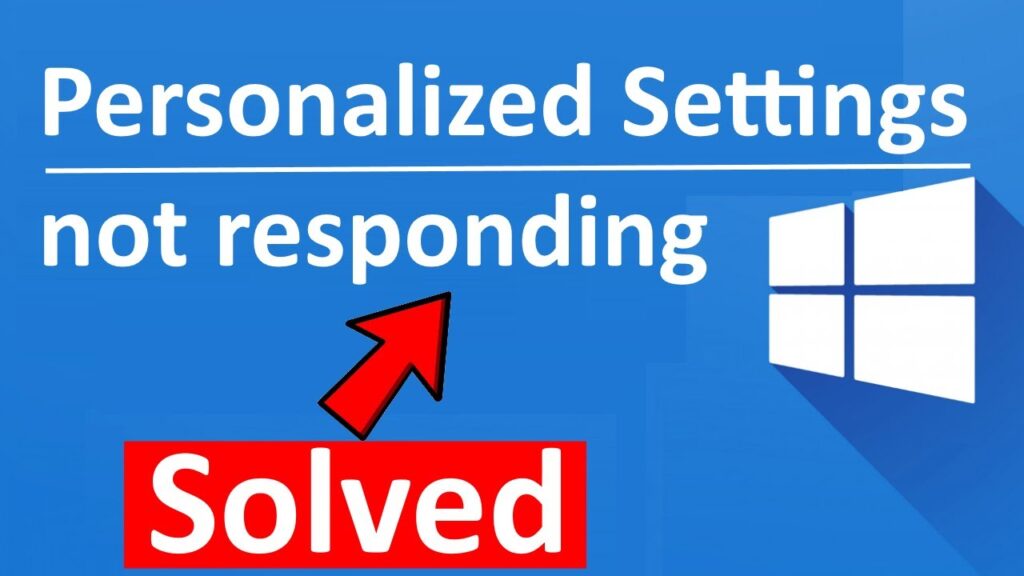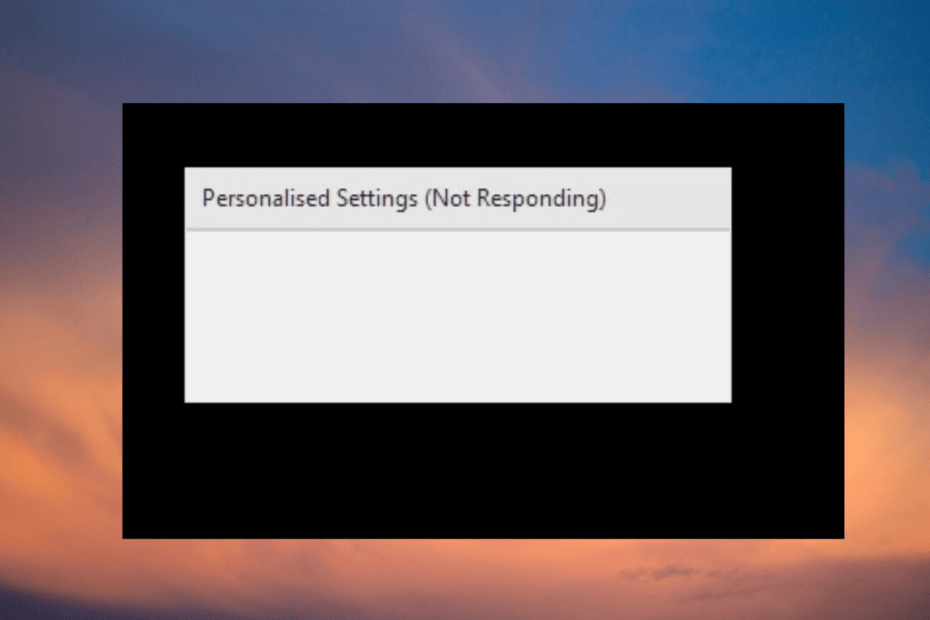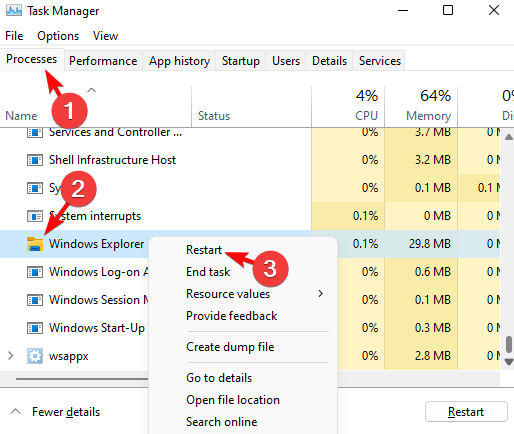Personalization is one of the coolest features of Windows 10. Users can customize their computing experience by using Personalization Options. This feature gives users access to a variety of options for changing functionalities like colors, lock screens, fonts, themes, and more.

Regrettably, you will occasionally encounter Customized Settings (Not Responding) problems. As this mistake occurs, you will most likely see a dark screen with an error box.
This article will discuss how to resolve the Customized Settings Not Responding problem.
Recommended Post:- How to Reset the TCP/IP Stack on Windows 10 – Complete Guide
Why isn’t Windows 11 Personalize Settings Not Responding
The Customized Settings Not Responding issue is rather rare. It commonly displays after restarting your device following a Windows update.
When you encounter this error, your smartphone will display a dark or white screen with the message: Customized Settings Not Responding. According to specialists, there are two possible causes for the Customized Settings Not Responding problem. Initially, if your File Explorer does not start properly after updating your Windows operating system.
Second, you will most likely see this warning if your Windows operating system is incompatible with the upgrade. If you are unable to access the Customized Settings on your PC to change icons, themes, and so on, there could be several causes for this:
When Windows Explorer fails to start, it continues to function in the background but cannot be opened regularly.
- System files: Most Windows errors are caused by faulty system files.
- Windows update failure: The recent Windows update may have introduced issues that are causing the problem.
- File Explorer did not launch properly: The File Explorer may occasionally crash, resulting in the customizable settings not responding to the issue.
- Graphics drivers that are no longer supported: You may be unable to access the personalized settings because your graphics drivers have not been updated, therefore it’s time to act.
Fortunately, we have several remedies that will get rid of the personalized settings not responding black screen problem and allow you to continue making adjustments.
How can you fix the Personalized Settings not Responding Error?
Perform the following preliminary checks to see if they assist resolve the problem:

- Restart your computer.
- Disconnect all of your gadgets.
- Before rebooting or shutting down after an update, try to disconnect the network connection.
- Change your network connection.
- Reset the graphics card.
- Instead of using your PIN, try using your password.
- Previous Windows updates should be uninstalled.
If the preceding procedures fail, you can go on to the main troubleshooting options listed below.
Solution 1: Restart Your Computer
A good and clean reboot will benefit your PC in a variety of ways, including the resolution of issues such as Customized Settings (Not Responding).
- Step 1: Reset your computer by pressing CTRL + Alt + Delete at the same time.
- Step 2: Locate the power button in the lower right corner of your screen.
- Step 3: Choose Restart.
Solution 2: Restart Windows Explorer as a second option
Restart Windows Explorer by going to the Task Manager and selecting it. This will reload the files, presumably removing the error.

- Step 1: On your keyboard, press Windows + X and select Task Management.
- Step 2: When the Task Management window appears, select the Processes Tab.
- Step 3: Identify the Windows Explorer Process.
- Step 4: Right-click the process and select Restart.
- Step 5: Go to the File Menu and select Run New Task.
- Step 6: The Create New Task window will appear. In the search box, type Explorer.
- Step 7: Check the Create this task with Administrator Privileges box. Enter your password.
- Step 8: Restart your computer to see if the error has been resolved.
Solution 3: Do a driver update check
By updating your drivers, you can resolve the custom Settings Not Responding issue.
- Step 1: On your keyboard, press the Windows + X keys.
- Step 2: Go to Device Manager.
- Step 3: Choose Update Driver from the context menu when you right-click on the drivers.
- Step 4: A new window will appear; click Search Automatically for Updated Driver Software.
- Step 5: Your computer will automatically seek and download the most recent versions of the drivers.

Solution 4: Execute the SFC Command
The System File Checker (SFC) command in Windows 10 is software that inspects all critical files on your machine. This command will find any corrupted or erroneous files that are causing the Customized Settings Not Responding error.
- Step 1: On your keyboard, press the Windows key. Start typing cmd, then right-click the Command Prompt and select Run as administrator.
- Step 2: When requested to confirm, click Yes.
- Step 3: Once in the command prompt window, enter sfc /scannow.
- Step 4: After the SFC command has been completed, download and replace any corrupted files in your system.
- Step 5: Reboot your computer to determine if the error has been resolved.
Solution 5: Use Regedit to Remove a File
The Windows Registry Editor (Regedit) is a graphical programme that allows authorized users to browse and modify the Windows registry. By making precise modifications in the Registry Editor, you should be able to resolve the Customized Settings Not Responding issue.
- Step 1: On your keyboard, press the Windows logo key.
- Step 2: Enter Regedit into the search box, then right-click the Regedit result and select Run as administrator.
- Step 3: When requested to confirm, click Yes.
- Step 4: Next, go to HKEY LOCAL MACHINE > SOFTWARE > Microsoft > Active Setup > Installed Components and double-click it.
- Step 5: Right-click the last file and select Export to back it up.
- Step 6: Right-click the last file and select Delete.
- Step 7: Restart the computer.
Solution 6: Unplug Your Devices
A Windows Update may occasionally cause issues with existing devices connected to your PC. Switch off your computer and unplug all keyboards, mouse, audio speakers, and other peripherals. Restart your computer and reconnect your peripherals. Check to see whether the problem has been resolved.
Conclusion
The Customized Settings Not Responding issue can be aggravating. Nonetheless, it is not a problem that should be taken seriously. The strategies discussed above are some surefire ways to fix the problem quickly.







